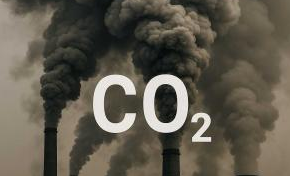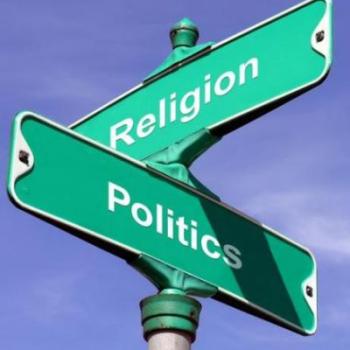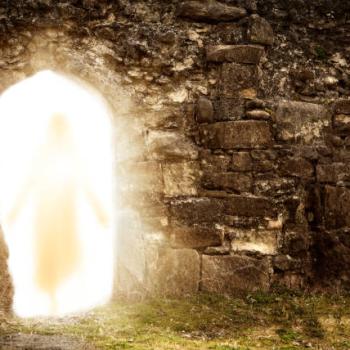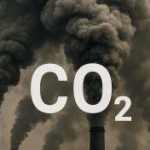
Rep. Doug LaMalfa of California, a climate skeptic, questioned the environmentalists concern about rising levels of carbon dioxide in the atmosphere. During a congressional hearing in February 1924, he asked how much carbon dioxide is in the air, anyway. Guesses ranged from 5% to 8%. The real answer LaMalfa said, is less – “Not 1%. Not a half of a percent. It’s .04%.” In other words, what’s all the fuss?
My answer is to look at an even smaller number – 0.014%,
0.014 is a big number!
That number is how much carbon dioxide in the air has increased, as a percentage of the whole atmosphere, since humans started burning coal, oil, and natural gas. I got that number and information that follows with a few questions I aimed at ChatGPT. ChatGPT got its information from these sources:
- “Climate Change Indicators: Atmospheric Concentrations of Greenhouse Gases” (NOAA)
- “Climate change: atmospheric carbon dioxide” (NASA)
- And “Carbon dioxide in Earth’s atmosphere” (Wikipedia)
That number, 0.014%, sounds pretty tiny, like something we puny human beings might be able to accomplish. And it would be a tiny number if it were oxygen or nitrogen in the air increasing or decreasing by that percentage. Oxygen makes up about 21% of the atmosphere; nitrogen 78%. Whatever job these two gases do isn’t going to change much by adding or subtracting 0.014%. In fact, they’d still be about 21% and 78% of the air.
But Carbon dioxide is presently about 0.042 percent of the gases in earth’s atmosphere (420 parts per million). Before the Industrial Revolution it was about 0.028% (280 parts per million). Approximately 42 minus approximately 28 equals about 14. It’s easy to see that adding 14 to 28 is a big change. That’s how much we have changed the carbon dioxide component of the air – by about 50 percent!
A job for carbon dioxide
That much more carbon dioxide isn’t going to suffocate us. While carbon dioxide was increasing, the level of oxygen in the air has changed hardly at all. Oxygen will do its job just fine. But carbon dioxide will do as much as it’s always done and half again as much.
One of carbon dioxide’s jobs is to act like a blanket around the earth. With the right blanket, earth’s temperature stays in the livable zone as it has been for all of recorded history. And we get the kind of environment that civilizations have been accustomed to.
The wrong carbon dioxide blanket
With the right amount of carbon dioxide, glaciers recede in the summer and build back up in the winter, and farmers downstream irrigate their crops with glacier melt. But glaciers around the world are greatly reduced from what they were even 50 years ago. I saw that years ago, pictorially illustrated on information signs by roads in Glacier National Park, Montana.
With the right amount of carbon dioxide, some pretty wild weather can happen—what we call 1000-year and 500-year storms. But, statistically speaking, they only happen every 1000 or 500 years, respectively. We don’t repeatedly get the kind of storms that Minnesota and the rest of the world have experienced in the last few years. Winter and summer stay pretty much the same length, not like the shortened winters and early ice-outs now occurring in Minnesota.
Oceans have risen an average of 8 to 9.5 inches around the globe. (ChatGPT, source: NASA, “Sea Level.”) In Florida and Louisiana that’s a lot, and the oceans are not finished rising. Disruptive and expensive, nuisance flooding is estimated to be from 300 percent to 900 percent more frequent and severe within U.S. coastal communities than it was just 50 years ago. (National Ocean Service, “Is the Sea Level Rising?”)
The frequency and severity of forest and grass fires is increasing. Weather extremes of heat, droughts, and floods are more extreme and more frequent.
When it comes to carbon dioxide we are putting into the air, 0.014 percent is a big number. We have, in fact, changed the climate and conditions under which thousands of years of civilization have passed.
Who are ‘we’?
Who are we? We are the people of the rich countries of the world, including the United States, Europe, and China. We are the ones heedlessly pouring carbon dioxide and other greenhouse gases into the air. Incomprehensibly, it’s in rich countries where a politician can take a scientific fact out of its context (like 0.04% carbon dioxide) and tell everyone not to worry. You don’t find such climate skeptics on disappearing Pacific islands.
Who are we not? We are not the ones who will suffer most from our actions and our stupidity. With money to see us through, we might imagine we are doing OK. The ones who will suffer most from the effects of climate change are the poor in the world’s poorest countries. Making or moral culpability complete, they are the ones who have made the smallest contribution to that 0.014.
(I have written elsewhere on climate change. See, for example, a post on “shrinking glaciers” and a study by the Papal Academy of Sciences.












